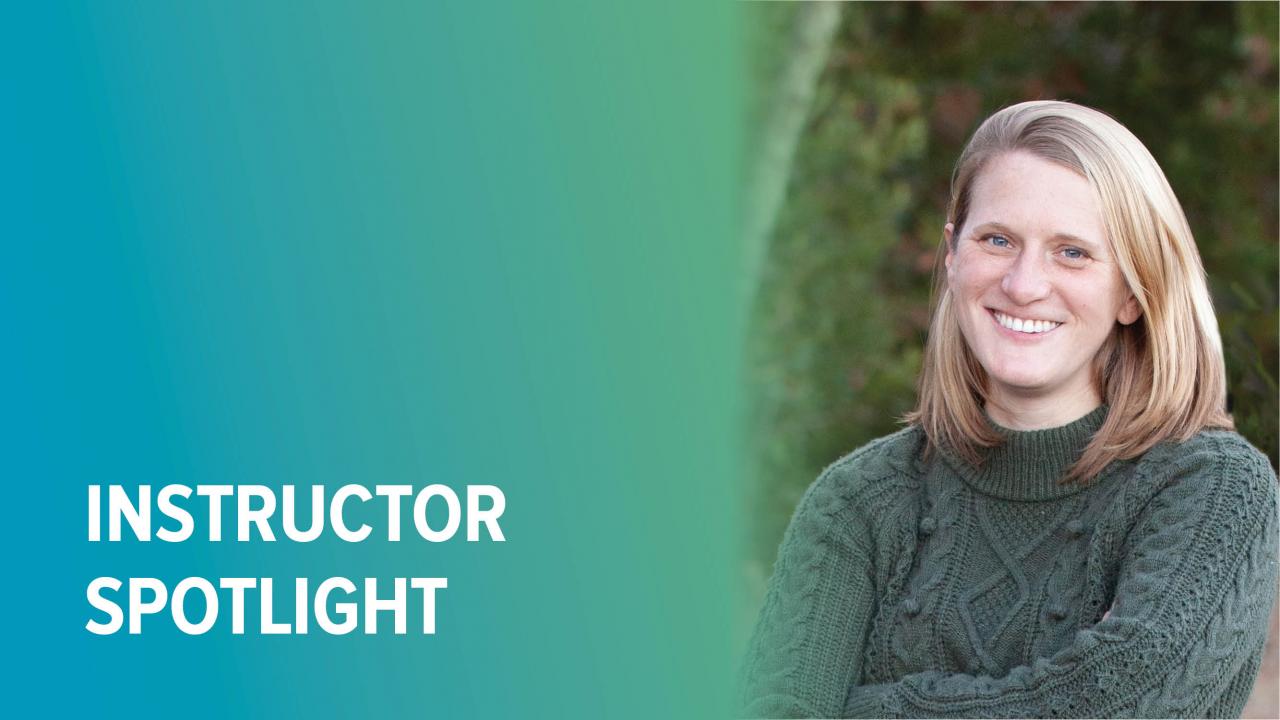
Instructor Spotlight: Sarah MacDonald
Growing up, Sarah MacDonald had a fascination with astronomy and astrobiology. But after taking a class in satellite imaging as an undergraduate, she became even more fascinated by the idea of turning the telescope around and studying Earth.
In 2008, she began teaching Geographic Information Systems (GIS) as a graduate student at UC Berkeley and is now a staff researcher at UC Davis. She is also the owner of Envision Geo, a GIS consulting firm in Napa Valley, which she founded in 2013 as a way to provide better data management and GIS mapping in viticulture. She saw the need for a firm like hers, when she discovered that her (future) husband had mapped his entire vineyard in Microsoft Excel. MacDonald is the instructor of UC Davis Continuing and Professional Education’s new course, GIS in Viticulture.
“I like seeing the spark in someone when they discover how GIS can help solve a puzzle they have been faced with in their own work.”
Tell me about your background and how long you have been working in GIS?
In 2005, my junior year at UCLA, I started my first job in GIS with the consulting firm URS (now AECOM) working on large environmental projects. For my doctorate at UC Berkeley, I created site suitability models for bioenergy crops. At Envision Geo, I work with a wide variety of clients on projects ranging from studying climate change impacts on California’s energy grid with Lawrence Berkeley Labs, to helping Napa Valley grape growers inventory individual vines for disease monitoring and prevention.
How is GIS used in the viticulture industry, and why is it important?
GIS is a valuable tool. It can serve as a central database for inventory management, decision making and to communicate vineyard needs to colleagues and supervisors. For example, maps can be made to identify areas that need extra nourishment or are under pressure from pests and disease. GIS can also be used to optimize production efficiency and yields. The database can be constantly updated, either in the office or in the field, reducing paperwork and allowing for more efficient analysis and insights.
How can learning GIS positively impact the career of viticulture professionals?
GIS is increasingly being used by viticulture industry leaders as a tool for improving workflow efficiency and vineyard management. Having these skills in your back pocket will make your job easier and make you more desirable in the job market.
What’s trending in GIS and viticulture that students should be aware of?
On the management side, vine-level mapping is increasingly being used to understand disease pressure and prioritize pest management. On the technology side, GIS cloud applications are quite powerful, intuitive and have great potential for data sharing and collaboration within an organization.
What do you want students to take away from your course?
I want students to be comfortable with essential GIS concepts for the viticulture industry. In GIS for Viticulture, students will gain experience creating, editing and visualizing GIS data and how to produce their own data and maps. Ultimately students will be exposed to new ways in which GIS can improve their existing workflows.
What skills will students gain in your course and how can they apply them in the vineyard?
Need help enrolling?
Contact an enrollment coach. They can speak answer your questions and work one-on-one with you to find the courses that fit your schedule and career goals.
Students will learn a number of skills, including:
- Experience creating, editing and visualizing GIS data in ArcGIS Pro, which can be used for block polygons, vine rows, wind machine points and hedgerows
- Cartography essentials for map layouts with relevant information for a field crew
- Essential spatial analysis, like buffers to creeks and roads and calculating row length for irrigation budgeting
- Viewing soil data or other relevant datasets and imagery like the National Agriculture Imagery Program (NAIP)
- Analyzing insect trap data, finding clusters and hot spots analysis
